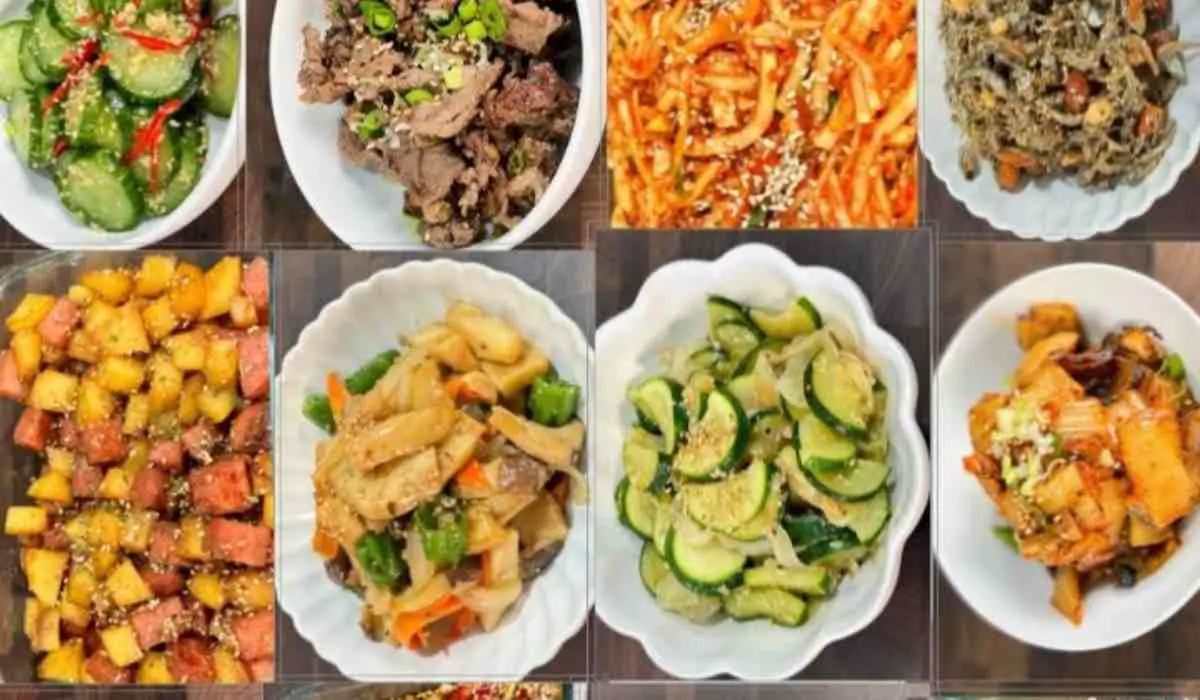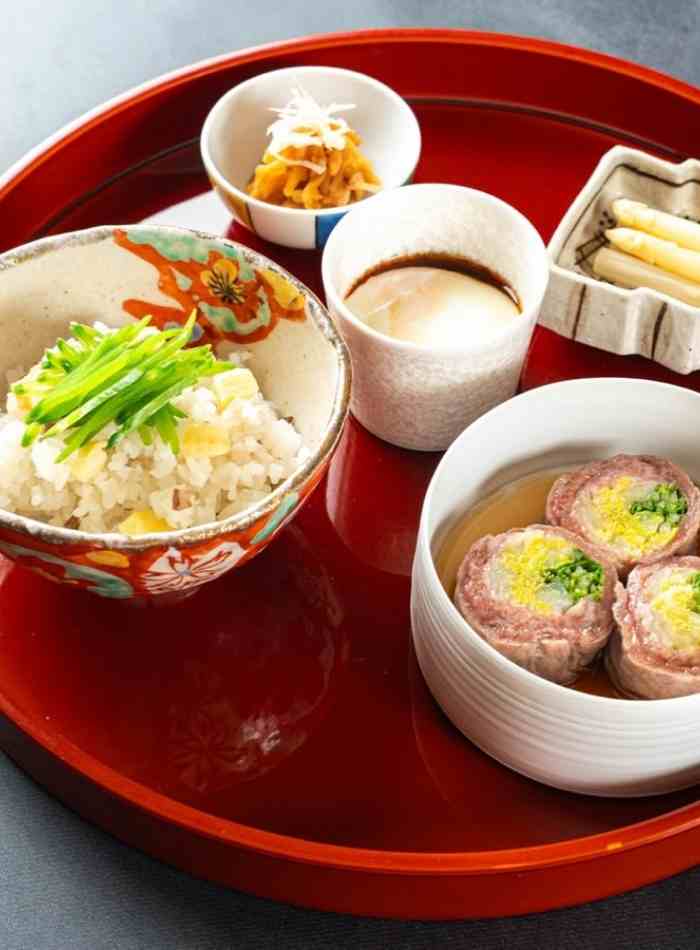Asian Foods is a rich tapestry of flavors, colors, and textures, spanning vast regions and cultures. From the spicy, aromatic curries of Bangladesh to the delicate sushi of Japan, Asian food reflects the history, traditions, and unique ingredients of the various countries in this vast continent.
In this article, we will take you on a culinary journey through some of the most iconic dishes and food cultures across Asia. Prepare yourself for an exploration of the bold flavors, intricate cooking techniques, and cultural significance of Asian foods.
The Origins of Asian Cuisine:
Asian cuisine is incredibly diverse, and each country in Asia has its distinct culinary identity. The continent is home to over 40 countries, each with a history of food culture shaped by geography, climate, religion, and trade. The rise of trade routes like the Silk Road and the maritime trade routes in the Indian and Pacific Oceans allowed for the exchange of spices, herbs, and cooking techniques that significantly influenced Asian food.
In fact, many Asian cuisines share common ingredients and techniques, yet they are often utilized in unique ways. For example, rice is a staple food in many Asian countries, from Bangladesh and China to Japan and Thailand. Similarly, spices like turmeric, cumin, ginger, and chili are commonly found across the continent, yet their usage and preparation vary from one country to another.
Bold Flavors and Aromatic Spices:
Indian cuisine is one of the most diverse in the world, reflecting the country’s rich cultural history and geographical diversity. The cuisine is renowned for its bold flavors, complex spice combinations, and a wide range of vegetarian and meat-based dishes. Key ingredients such as curry leaves, cumin, coriander, turmeric, and garam masala play an essential role in bringing dishes to life.
Bangladeshi Cuisine:
Popular Dishes:
-
Biryani – This fragrant rice dish is made with basmati rice, meat (chicken, mutton, or beef), and a blend of aromatic spices. The dish’s origins trace back to Persian and Mughal influences, and it is considered a celebratory food in many parts of India.
-
Butter Chicken – A creamy tomato-based curry with tender chicken pieces, butter chicken is a beloved dish that balances rich, tangy, and mildly spicy flavors.
-
Samosa – These crispy pastry pockets are filled with a spiced potato and pea mixture and often served as an appetizer or snack.
-
Masala Dosa – A crispy, thin rice pancake stuffed with a spiced potato filling, masala dosa is a popular breakfast or snack in South India.
Indian food is often accompanied by flatbreads like naan, roti, or paratha, all of which are perfect for dipping into the rich gravies and sauces that characterize the cuisine.
Chinese Cuisine: A Balance of Flavors and Techniques:
Chinese cuisine is one of the oldest in the world, and its influence has spread across the globe. It is known for its balance of flavors—sweet, salty, sour, and bitter—and for its use of different cooking techniques such as stir-frying, steaming, braising, and deep-frying.
Popular Dishes:
-
Peking Duck – A dish made famous in Beijing, Peking duck features crispy, golden-brown duck skin served with pancakes, hoisin sauce, and thinly sliced vegetables.
-
Dim Sum – Originating from Cantonese culture, dim sum includes bite-sized dumplings, buns, and spring rolls served in small portions, typically enjoyed during tea time.
-
Kung Pao Chicken – This spicy, stir-fried dish features chicken, peanuts, and chili peppers, creating a sweet, savory, and spicy combination.
-
Sweet and Sour Pork – A classic dish made with tender pieces of pork coated in a tangy sauce made from vinegar, sugar, and ketchup, often accompanied by bell peppers and pineapples.
Chinese cuisine is also home to many regional variations, such as the Sichuan cuisine known for its bold, spicy flavors, and Cantonese cuisine, which emphasizes light, fresh flavors and steaming techniques.
Japanese Cuisine: Simplicity and Elegance:
Japanese cuisine is marked by simplicity and seasonal ingredients. The philosophy of umami, the fifth basic taste, plays a significant role in the depth of flavor in many Japanese dishes. The focus is on fresh, high-quality ingredients prepared with minimalistic techniques that highlight their natural flavors.
Popular Dishes:
-
Sushi – Perhaps the most internationally recognized Japanese dish, sushi consists of vinegared rice, often accompanied by raw fish, vegetables, or egg. There are various types of sushi, including nigiri, sashimi, and maki rolls.
-
Ramen – A bowl of comforting noodles served in a rich broth, ramen is often topped with ingredients like soft-boiled eggs, nori, bamboo shoots, and chashu pork.
-
Tempura – Lightly battered and deep-fried seafood or vegetables, tempura is crispy and often served with a dipping sauce.
-
Takoyaki – These savory octopus-filled dough balls are cooked in special molds and served with a sweet and savory sauce, bonito flakes, and pickled ginger.
Japanese cuisine is known for its aesthetic appeal and is often described as food for the eyes as much as for the palate. A meal is designed to be balanced in terms of color, texture, and taste.
Thai Cuisine: A Symphony of Flavors:
Thai food is famous for its vibrant flavors, which are a harmonious blend of salty, sweet, sour, and spicy elements. Thai cuisine also incorporates a wide range of fresh herbs and spices, including lemongrass, cilantro, galangal, and Thai basil.
Popular Dishes:
-
Pad Thai – A stir-fried noodle dish made with rice noodles, shrimp or chicken, eggs, peanuts, and a tangy tamarind sauce, pad thai is a staple of street food culture in Thailand.
-
Tom Yum Goong – This famous Thai soup features a spicy and sour broth, with shrimp, lemongrass, lime leaves, and chili, making for a fragrant and bold dish.
-
Green Curry – A rich, aromatic curry made with green curry paste, coconut milk, and various vegetables and meats, this curry is known for its spicy, creamy flavor.
-
Mango Sticky Rice – A popular dessert that combines sweet coconut-flavored sticky rice with ripe mango slices, this dish is a refreshing end to any Thai meal.
Thai cuisine has a deep cultural significance, with many dishes being enjoyed during festivals, family gatherings, and street markets.
Vietnamese Cuisine: Fresh and Flavorful:
Vietnamese food is known for its fresh ingredients, light preparation, and bold flavors. It is heavily influenced by the use of herbs, rice noodles, and fish sauce, and it emphasizes a balance of contrasting flavors in each dish.
Popular Dishes:
-
Pho – A fragrant noodle soup made with beef or chicken, herbs, and broth, pho is the national dish of Vietnam and is often eaten for breakfast.
-
Banh Mi – This delicious sandwich combines crispy French baguettes with savory fillings like pork, pate, and pickled vegetables, reflecting the country’s French colonial influence.
-
Goi Cuon – Also known as Vietnamese spring rolls, goi cuon are fresh rice paper rolls stuffed with shrimp, pork, vermicelli noodles, and fresh herbs, often served with a peanut dipping sauce.
-
Bun Cha – A grilled pork dish served with rice noodles and a savory dipping sauce, bun cha is a popular meal in Hanoi.
Korean Cuisine: Bold, Spicy, and Fermented:
Korean cuisine is known for its emphasis on fermentation, with dishes like kimchi (fermented vegetables) being a staple. The cuisine features bold, spicy flavors and a strong emphasis on communal dining. Rice, vegetables, and meats are often served together in an array of side dishes called banchan.
Popular Dishes:
-
Bibimbap – A mixed rice dish topped with a variety of vegetables, eggs, and your choice of meat, bibimbap is often served with gochujang (spicy red pepper paste).
-
Kimchi – Fermented vegetables, usually cabbage, seasoned with chili peppers, garlic, ginger, and other spices, kimchi is a common side dish in Korean meals.
-
Bulgogi – A dish made with marinated beef, bulgogi is typically grilled or stir-fried and served with rice and vegetables.
-
Tteokbokki – Spicy, chewy rice cakes are stir-fried with fish cakes, vegetables, and spicy gochujang sauce for a satisfying street food snack.
Take Away:
Asian cuisine is a culinary adventure that offers something for everyone, from spicy and aromatic curries to delicate sushi and fragrant soups. Each country in Asia brings its unique approach to food, with rich histories and traditions that shape every dish. Whether you’re craving the complexity of Indian spices, the simplicity of Japanese sushi, or the bold flavors of Thai and Korean dishes, Asian cuisine offers endless possibilities for exploration.
Next time you visit an Asian restaurant or decide to cook at home, take the opportunity to explore the diverse flavors, ingredients, and techniques that make up the incredible food cultures of Asia. Happy eating!
Find More: 10 Easy Summer Meals
FAQs:
Q. What are the most popular Asian cuisines?
The most popular Asian cuisines include Chinese, Indian, Japanese, Thai, Vietnamese, and Korean. Each cuisine offers distinct flavors and unique ingredients, from the spices of India to the fresh herbs of Vietnam.
Q. What is the staple food in Asian diets?
Rice is the staple food in many Asian countries, including India, China, Japan, and Thailand. In some regions, noodles, bread, or root vegetables are also central to the diet.
Q. Why is Asian food known for being spicy?
Many Asian cuisines use fresh chilies and spices like ginger, garlic, and curry to create bold and spicy flavors. These ingredients not only add heat but also depth and complexity to dishes.
Q. What makes Japanese cuisine unique?
Japanese cuisine emphasizes simplicity, seasonal ingredients, and aesthetic presentation. Dishes like sushi, tempura, and ramen are known for their delicate flavors and artistic presentation.
Q. What is the significance of kimchi in Korean food?
Kimchi, a fermented vegetable dish (usually cabbage or radishes), is a staple of Korean cuisine. It’s rich in probiotics and is often served with every meal, symbolizing the importance of fermentation in Korean culinary culture.
Q. What are some common ingredients in Thai cooking?
Common ingredients in Thai cuisine include lemongrass, coconut milk, fish sauce, basil, lime, chili, and rice. These ingredients are used to create the characteristic balance of sweet, salty, sour, and spicy flavors in Thai dishes.



